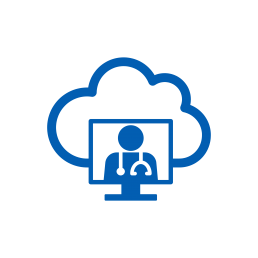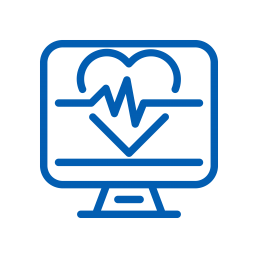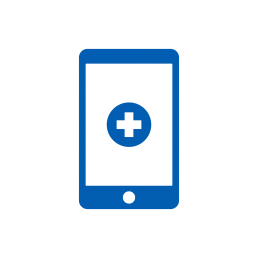The global COVID-19 pandemic has caused widespread disruption around the world and brought with it a lot of uncertainty. The response from many healthcare systems is showing the increased adoption of digital tools and innovative solutions.
Whilst Virtual Care services are nothing new, the COVID-19 pandemic has pushed Virtual Care solutions like Telehealth to the top of the healthcare agenda. In order to deal with increased demand for healthcare services, governments around the world have pushed through regulatory changes to allow the widespread use of Virtual Care models. These Virtual Care platforms are an indispensable tool in an environment where health systems try to keep up supply (clinical assessments and triage) with demand (patients).
In a post COVID-19 world, care delivery models around the world will be transformed and there will be widespread adoption of Virtual Care models in virtually every healthcare setting. This is part of a wider digital transformation agenda in healthcare. Care that used to take place exclusively in physical settings (e.g Doctor’s office) can now take place digitally. Every healthcare organisation (payors, hospitals, life sciences, pharma, medical devices etc.) across the entire value chain (prevention, primary care, secondary care, tertiary care, social care, palliative care, etc.) are exploring a variety of virtual care models, many of which are enabled by telehealth technology.
Hospitals are already using Virtual Care to improve accessibility, availability and affordability of care. As demands for healthcare services increase, driven by an aging population requiring more complex care, Virtual Care offers a smart way to leverage finite healthcare resources.
Virtual Care and digital healthcare enable a model of care that is more affordable and integrated into patients’ lives. Consumer behaviour is also shifting. As Dr. Eric Topol describes in his book titled “The Patient Will See You Now”, patients seek to access healthcare on their own terms (time and place).
Hospitals and health systems that take a proactive approach towards Virtual Care will be well-positioned to meet patient demands in the future.

Definitions
Virtual care is comprised of four categories:
Real-time interaction with the most appropriate clinical team to support patient requiring immediate advice. Post virtual triage, a follow face-to-face consultation with the most appropriate clinician team (doctor, nurse, pharmacist, etc.) can take place.
Modern information and communication technologies, data such as bio-signals or medical images can be acquired from the patient and then stored or sent to the specialist when needed. The field of Pathology, Radiology, and Dermatology are those using such services already. For example, with a shortage of Radiologists in certain countries, scans can be read and reported on by specialists remotely. If Artificial Intelligence (AI) is layered on top, certain scans can be read by AI to act as a “second pair of eyes” to human reads.
Uses a range of technological devices in order to remotely monitor clinical signs and health of a patient. Remote monitoring is extensively used in the management of chronic diseases such as asthma, diabetes mellitus, and cardiovascular disease.
According to the Centers for Disease Control and Prevention, 6 in 10 adult Americans live with at least one chronic disease and 4 in 10 adults live with two or more chronic diseases. Among the benefits of virtual care include greater patient satisfaction, more frequent monitoring, and cost effectiveness.
There is a strong tendency that patients are involving more in monitoring their own health through the use of smartphone applications and wearable devices designed to help them track and improve various health indicators.
According to Statista, there are 3.2 billion smart phone users out of a total population of 7.7 billion people around the world. This information and these devices can be also used by policymakers, practitioners, and leaders in the medical and health care industry in order to identify and act on health trends, inform treatment decisions, and even provide outgoing communication to the public.
Such solutions can also deliver basic care to parts of the population living in remote locations. For example, nutrition advice can be provided remotely to pregnant women and/or mothers with young children in small villages with virtually no access to care, but may have access to mobile technology.

“Use” cases
By increasing access points and redistributing expertise where it’s needed, Virtual Care can address disparities and improve outcomes. Virtual Care platforms can be used to provide a range of services such as, but not limited to:
Primary Care
- Chronic care management, recording vital signs through home-monitoring systems and sending alerts to clinicians when readings fall out of the normal range.
- Pharmacy services, including medication review and prescription verification, for patients with chronic diseases such as diabetes, hypertension, etc.
- Diagnostic screening for diabetes-related eye disease, increasing the number of diabetes patients who receive eye exams to help prevent blindness.
- Sleep disorders, monitoring patients with sleep apnoea for sleep patterns, body positions and breathing.
- Tele-psychiatry, assisting patients in need of behavioural health services.
- Tele-physiotherapy, assisting patients with physiotherapy sessions remotely.
Acute/Hyper-Acute
- Tele-stroke services, creating access to the limited supply of stroke neurologists and targeted use of therapies that preserve brain function and save lives. Tele-stroke services can also help facilitate a “hub and spoke” model, where a hyper-acuity stroke unit can provide remote support to a stroke centre.
- Tele-ICU tools, providing 24-hour intensive support to deliver optimal local care to the most acute patients. ICU beds can all be monitored from one, central control room anywhere in the world.
- Pre & Post Op Consultations, ensuring more efficient use of resources across the health system where a physical exam on the day is not required. For example, a patient scheduled for a cardiac ablation procedure can be consulted remotely prior to the procedure, once certain tests have been performed in advance.
- Post-surgical recovery, allowing patients to self-manage recovery process with support from clinical teams as needed remotely. Sophisticated solutions can also include apps to capture progressive pain scores, wound images, etc. so that clinical teams can monitor recovery remotely.

Adoption Challenges
There are some barriers to expanding access to care through Virtual Care. The eight most significant barriers are:
- The lack of leadership and organisational commitment to develop an overarching strategy and integrate care delivery within the clinical pathway (e.g. pre and post op consultation)
- Inadequate clinical engagement and readiness without consideration of user (clinicians and patients) experience and workflows
- Restrictions on how Virtual Care services are reimbursed
- Licensure laws and regulations that limit the ability to provide Virtual Care services across multiple jurisdictions (i.e. from one state to another within the US)
- The lack of “connectivity” or adequate internet services in some areas to support Virtual Care
- Decentralised departmental solutions and pilot programs without governance structure and dedicated management and potentially competing propositions
- The high cost of technologies and infrastructure and a lack of funding
- Evolving measures of success and key performance indicators hampering scaled platforms
As a result of COVID-19, many of these hurdles are being taken down rapidly to help drive quicker adoption of Virtual Care services.

Key Success Factors
How do hospitals and health systems begin to harness the benefits of Virtual Care?
Virtual Care is not about technology. Technology is simply an enabler! It starts with culture—and culture starts with the Board and Executive Management team. The governing board and senior management can ignite cultural change with a vision statement that embraces virtual care as an extension of what the hospital or health system already does, rather than as something new or different.
Successful hospital and health system Virtual Care programs require discerning technology choices and critical vendor selection. Success also demands uncomfortable cultural changes and the right executive to create a comprehensive virtual care delivery system for patients.
We can help your organisation develop a business case for virtual care. We can help you redesign clinical pathways so that virtual care is not a standalone model, but is truly integrated into the delivery of patient care along the entire pathway.




